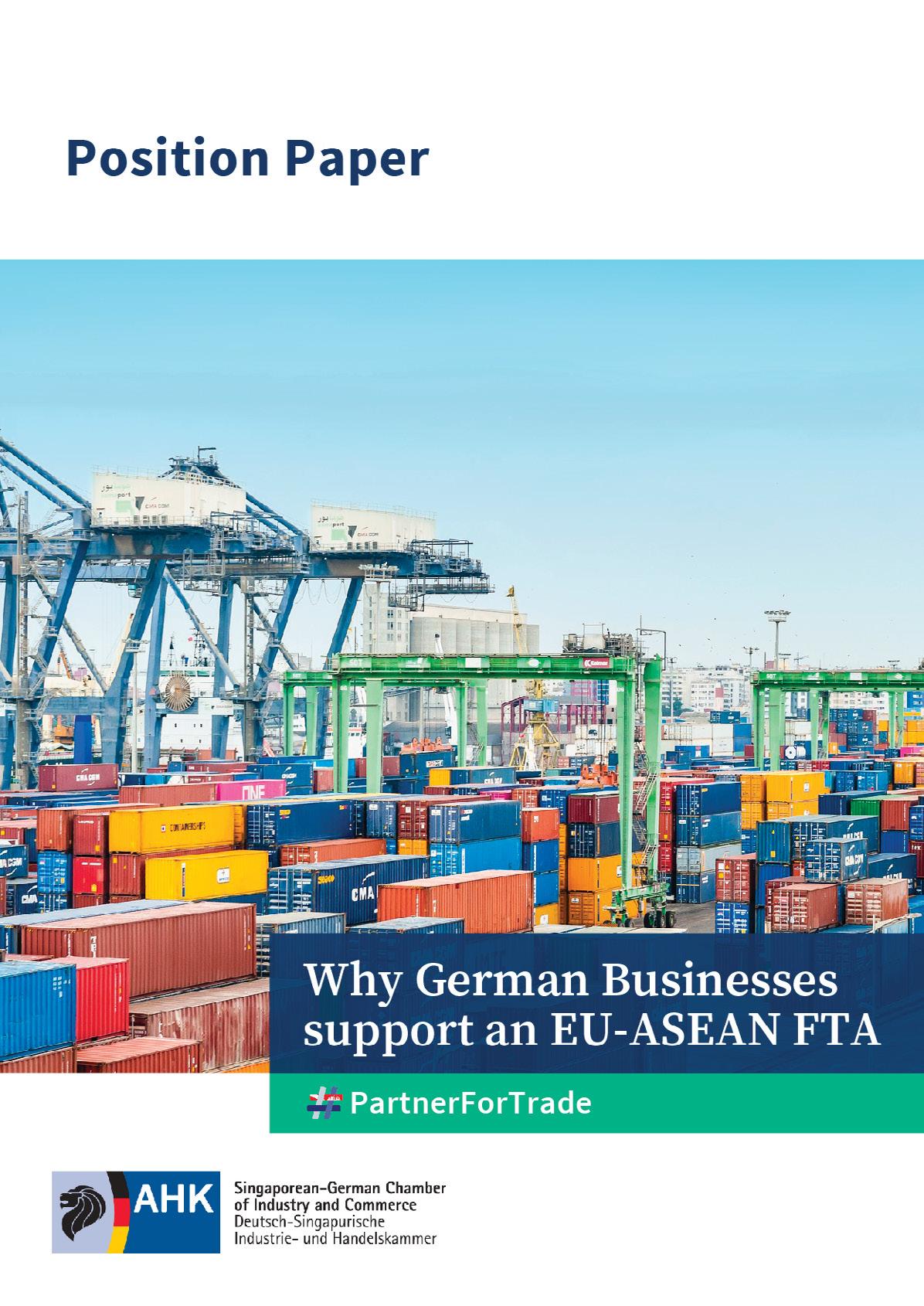
Singaporean-German Chamber of Industry and Commerce







25 International Business Park, #03-105 German Centre, Singapore 609916 Phone: (+65) 6433 5330



Email: info@sgc.org.sg
Website: www.sgc.org.sg

SGC Corporate Gold Members
Author: Annika Huck
Divisional Head for Trade Policies (Asia/ ASEAN)

Date: August 2023

Designer: Dexel Pte Ltd

Copyright © Singaporean-German Chamber of Industry and Commerce (“SGC”)


All rights reserved. No part of this publication may be reproduced, stored in a retrieval system, or transmitted in any form or by any means, electronic, mechanical, photocopying, recording, or otherwise, without the prior permission of the copyright owners.


The SGC does not guarantee that the information contained in this publication is accurate and free from errors and omissions despite having made efforts to verify its accuracy. The views and opinions expressed in this publication belong to the authors and contributors and do not necessarily represent the views of the SGC. The SGC shall not be responsible for any loss or damage arising out of or in connection with your use of or reliance on any information contained in this publication. The SGC is a neutral organisation and does not endorse or recommend any of its members and clients.
Supported by:


Foreword


Today companies face many challenges: continuous geopolitical tensions, inflationary pressures, supply chain disruptions, and increasing trade barriers. It is against this backdrop that we are very pleased to share the potential a future free trade agreement (FTA) between the European Union (EU) and the Association of Southeast Asian Nations (ASEAN) could have, to build relationships that will shape our future. An EU-ASEAN FTA would be a beacon of opportunity, promising improved economic integration, strengthened supply chains and increased market access for businesses in both regions.
The negotiations for an EU-ASEAN FTA commenced in 2007 but were paused in 2009. While both parties agreed to re-initiate formal talks in 2017, progress has been limited since then. This position paper sheds light on the significance of an EU-ASEAN FTA and presents a compelling case for resuming the negotiations.
Noteworthy in this paper are the results from the survey conducted with German businesses across the ASEAN region where an impressive 85 percent of German companies expressed the need for an EU-ASEAN FTA. You can read these findings in Chapter 4 of this paper.

The EU-ASEAN FTA can provide a unique opportunity to integrate sustainable practices, promote responsible business conduct, and uplift communities in both regions.
We invite all stakeholders to join hands and embrace the possibilities that an EU-ASEAN FTA could present. Together, let us forge ties that transcend borders, foster innovation, and shape a resilient future for our businesses, economies, and people.
Shirley Qi President, SGC
 Dr Tim Philippi Executive Director, SGC
Dr Tim Philippi Executive Director, SGC
1 Singaporean-German Chamber of Industry and Commerce
Foreword

In today's interconnected world, where global economies are intricately linked, the importance of Free Trade Agreements (FTAs) cannot be overstated. They serve as drivers of economic growth, fostering cooperation and establishing mutually beneficial relationships between nations.
At the European Chamber of Commerce (Singapore) and the EU-ASEAN Business Council, we play a pivotal role in representing the collective interests of the European businesses, promoting bilateral trade, services, and investments between the EU member states and Singapore in the case of EuroCham Singapore, and between the EU member states and the whole of the ASEAN region for the Business Council.
We wholeheartedly endorse the call in this paper for the recommencement of discussions for an EU-ASEAN FTA.
I would like to express my sincere gratitude to the Singaporean-German Chamber of Industry and Commerce (SGC) for conducting the survey and diligently crafting this position paper. The survey’s outcomes and the arguments presented in this paper also reflect the interests and challenges of all businesses in the EU member states, something that is underscored by successive surveys done by the EU-ASEAN Business Council.
We hope that this position paper will serve as a catalyst for discussions and dialogues among policymakers, business chambers, and key stakeholders in the EU, in ASEAN and between the two blocs.
Jens Rubbert President, EuroCham Singapore Chairman, EU-ASEAN Business Council

2 Singaporean-German Chamber of Industry and Commerce
3 Singaporean-German Chamber of Industry and Commerce 10 reasons why German Businesses support an EU-ASEAN FTA EU-ASEAN FTA: Status Quo Survey Results: FTAs - EU and ASEAN Political and economic situation Statements from the German economy Conclusion Current situation between EU and ASEAN countries Regional FTAs FTAs installed Negotiations ongoing Negotiations paused No Negotiations ASEAN + 1 Free Trade Agreements Regional Comprehensive Economic Partnership (RCEP) Comprehensive and Progressive Agreement for Transpacific Partnership (CPTPP) Indo-Pacific Economic Framework for Prosperity (IPEF) Contents Foreword 04 05 17 22 25 28 08 12 09 10 11 11 13 14 15 16 03 01 01 04 05 06 07 02 03 Contents
10 reasons why German Businesses support an EU-ASEAN FTA

The bilateral agreements serve as building blocks for an EU-ASEAN Free Trade Agreement, it was always the plan to get back to a region-toregion FTA.
85 percent of German companies stated (refer to chapter 4) that they think an EU-ASEAN FTA is important for their company.
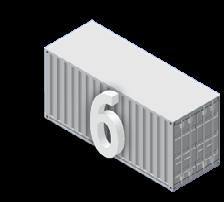
An EU-ASEAN FTA would include all ASEAN countries and therefore would be comprehensive and important for the future economic cooperation between the EU and ASEAN.
An EU-ASEAN FTA would create favourable and flexible conditions for companies.


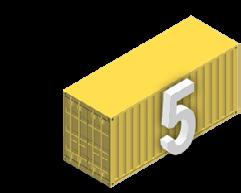


An EU-ASEAN FTA could enhance market accesses by decreasing tariffs and non-tariff barriers.



It would help companies to diversify their supply chains and customers and therefore reduce the reliance on one single market.
The Agreement could increase investment flows between the regions.
The agreement could harmonise trade rules and procedures to reduce trade compliance costs and simplify the usage of the FTA.
International standards of different industries and products could be introduced and unified within ASEAN.
With several regional FTAs and frameworks in place or under negotiations, the EU is at risk of being left behind without joining an existing FTA or installing its own FTA.
4 Singaporean-German Chamber of Industry and Commerce

Why German Businesses support an EU-ASEAN FTA between the EU and ASEAN Singaporean-German Chamber of Industry and Commerce 01 EU-ASEAN FTA: Status Quo
EU-ASEAN FTA: Status Quo 1
In 2007, the EU and ASEAN attempted to negotiate a region-to-region FTA. However, the negotiations were suspended in March 2009 as the EU and ASEAN countries agreed to pursue a bilateral format (please refer to Chapter 2). In March 2017, the EU and ASEAN agreed to launch formal talks to develop a framework setting out the parameters of a future EU-ASEAN FTA. This Joint Working Group has held only a few meetings thus far. An EU-ASEAN FTA would be added to the bilateral FTAs and companies would have the choice which of the FTAs fits their needs best. In September 2022, the EU-ASEAN Economic Ministers Consultations decided to shift the focus towards sectoral cooperation in the areas of digital economy, green technologies and services, and supply chain resilience. Therefore, not much has developed on this front, despite the EU’s intention to enhance cooperation with ASEAN under the Indo-Pacific Strategy. Graph 1 illustrates the timeline of the trade relations.
2007 2010 2013
Negotiations for an EU-ASEAN FTA launched
2009
Negotiations were paused
Negotiations with Singapore launched
Negotiations with Thailand launched
Negotiations with Malaysia launched Negotiations with Malaysia suspended due to an impasse
2012 2014
Negotiations with Vietnam launched
Completion of negotiations with Singapore
Negotiations with Thailand suspended after militant coup
6 Singaporean-German Chamber of Industry and Commerce
7 Singaporean-German Chamber of Industry and Commerce Negotiations with Indonesia launched
FTA comes into force Relaunch of negotiations with Thailand Bilateral Negotiations with the Philippines
group for framework setting out the parameters of the EU-ASEAN FTA
comes into force Completion of negotiations with Vietnam Negotiations with the Philippines suspended 2015 2017 2020 2016 2019 2023
EU-Singapore
Working
EU-Vietnam FTA

02 Current situation between EU and ASEAN countries Singaporean-German Chamber of Industry and Commerce Why German Businesses support an EU-ASEAN FTA between the EU and ASEAN
2 Current situation between EU and ASEAN countries
FTAs installed
EU-Singapore Free Trade Agreement (EUSFTA)

Negotiations between the EU and Singapore were launched in 2010 and completed in 2014. The FTA was signed in October 2018 and entered into force in November 2019.
The separate Investment Protection Agreement (EUSIPA) was also signed but still awaits ratification.
Market access for goods
Even before the implementation of the EUSFTA, nearly all products enjoyed duty-free access to the Singaporean market. With the agreement in effect, Singapore has eliminated any remaining customs duties, while the EU is on track to eliminate the majority of its duties by November 2024.
Government procurement
As a party to the WTO GPA (WTO Government Procurement Agreement), Singapore already applies a high standard to its public procurement regime and allows foreign companies to compete in tenders. The EUSFTA builds on an existing commitment and creates new opportunities for EU companies.
Investment liberalisation and trade in services
Concessions were negotiated based on positive lists. Singapore liberalised many services, including maritime transport, telecommunication, financial and environmental services. Singapore made far-reaching concessions to maintain an open investment regime for the manufacturing of chemicals, pharmaceuticals, medical devices, electrical machinery, motor vehicles, and transport equipment. Notable restrictions only remain in the publishing, printing, and reproduction of recorded media.
EU-Vietnam Free Trade Agreement (EVFTA)
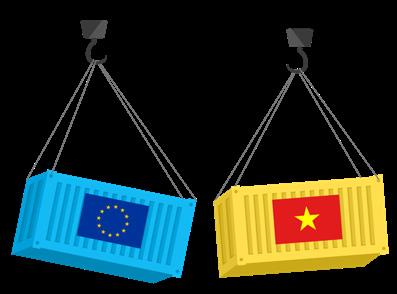
Negotiations between the EU and Vietnam were launched in 2012 and completed in December 2015. The EVFTA entered into force in August 2020. The separate Investment Protection Agreement was also signed but still awaits ratification.
Market access for goods
In 2021, Vietnam‘s average applied tariff rate was 9.6 percent. Duties are high in various sectors, including processed food, beverages, and motor vehicles and transport equipment. Upon entry into force, Vietnam removed 65 percent of its duties. The remaining duties underwent a reduction and will be gradually removed by 2030. Upon full implementation, the EVFTA will eliminate 99 percent of all duties.
Government procurement
Vietnam is currently not a party to the WTO GPA, and access to the public procurement market can be challenging for foreign competitors. Vietnam now allows EU companies to tender equally with local companies for contracts of public authorities listed in the FTA.
Investment liberalisation and trade in services
Concessions were negotiated based on positive lists. Vietnam liberalised many commercially meaningful services, including telecommunication, financial, computer, environmental, postal, and distribution. In non-service sectors, Vietnam has fully liberalised manufacturing of electrical and nonelectrical machinery, chemicals and petrochemicals, textiles, and medical devices. Some restrictions prevail in the railway and aerospace sector in the form of limits on foreign equity participation. Automobile assembly and manufacturing continue to be subjected to government planning.
9 Singaporean-German Chamber of Industry and Commerce
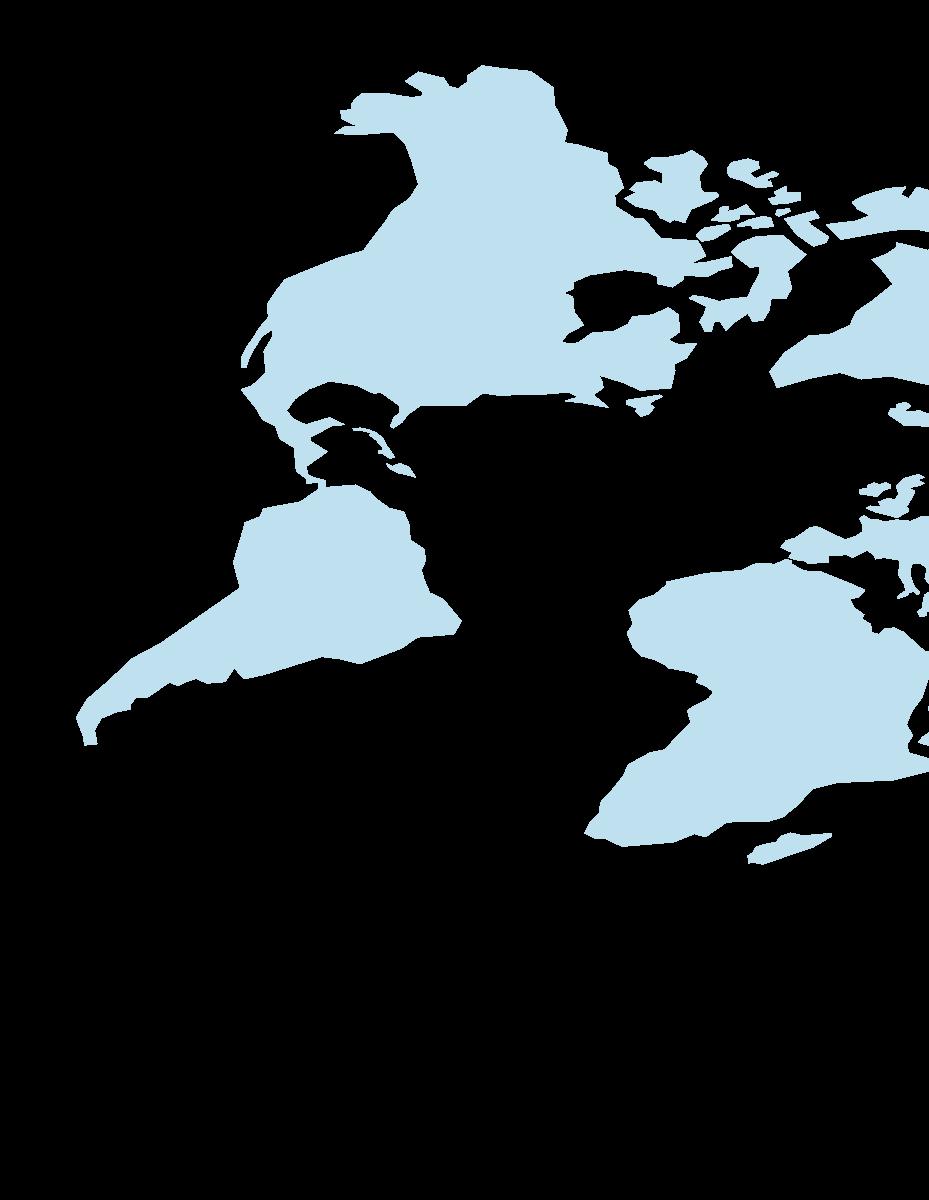

10 Singaporean-German Chamber of Industry and Commerce

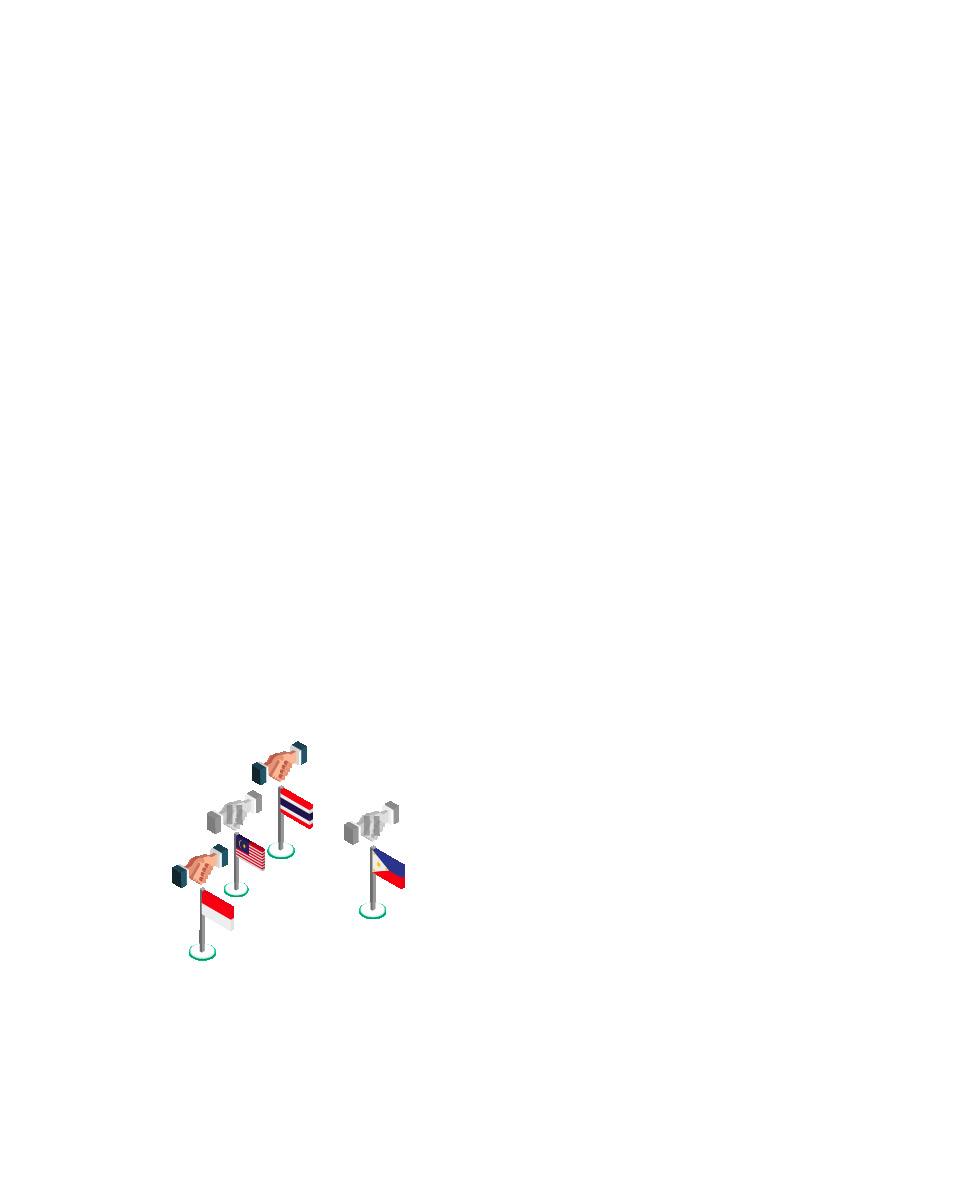
11 Singaporean-German Chamber of Industry and Commerce

03
Singaporean-German Chamber of Industry and Commerce Why German Businesses support an EU-ASEAN FTA between the EU and ASEAN
Regional FTAs
3 Regional FTAs
ASEAN + 1 Free Trade Agreements
ASEAN has installed FTAs with close partners to promote trade and foreign investment. Currently, there are six ASEAN + 1 installed, namely with: China (came into force in 2005), Republic of Korea (2007), Japan (2008), India (2010), Australia and New Zealand (2011), and Hong Kong (2018). The agreements vary in scope, whereas the FTA with Australia and New Zealand is the most comprehensive one. Table 1 shows the extent of tariff elimination of the six ASEAN + 1 FTAs. Generally speaking, the FTAs of the EU cover more topics and liberalise markets in a greater scope. In 2021, ASEAN and Canada launched negotiations about a free trade agreement.
Free Trade Agreement Tariff eliminated Fully phase out by
ASEAN-Australia-New Zealand Free Trade Agreement (AANZFTA)
ASEAN-China Free Trade Area (ACFTA)
ASEAN-Japan Comprehensive Economic Partnership (AJFTA)
ASEAN-Korea Free Trade Area (AKFTA)
ASEAN-India Free Trade Area (AIFTA)
ASEAN-Hong Kong, China Free Trade Agreement (AHKFTA)
Table 1: ASEAN + 1 Free Trade Agreements
fully implemented Already fully implemented 2026 Already fully implemented Already fully implemented 2041
Already
13 Singaporean-German Chamber of Industry and Commerce
Regional Comprehensive Economic Partnership (RCEP)
The Regional Comprehensive Economic Partnership (RCEP) is a trade agreement between 15 countries: the ASEAN members, Australia, China, Japan, Republic of Korea, and New Zealand. This makes RCEP the world’s largest trade agreement, comprising 30 percent of the GDP and a third of the world’s population. Negotiations were formally launched in 2012 and the FTA came into effect in January 2022. New members can join from July 2023 onwards. The first countries like Hong Kong, Sri Lanka, and Bangladesh expressed interest to join the trade pact. RCEP consists of 20 chapters and covers market access for goods and services, investment, technical barriers, digital trade, and competition policy.

Market access for goods
On average, tariff elimination of about 92 percent of goods traded amongst the parties. In most markets, the tariffs are being phased out over 20 years. The tariff reduction also varies from country to country, some countries have different schedules for selected countries, others have just one schedule for all partners.
Investment liberalisation and trade in services
Concessions were negotiated in a complex manner. Australia, Brunei Darussalam, Indonesia, Japan, Republic of Korea, Malaysia, and Singapore made concessions based on the “negative list” approach which provides for greater clarity and transparency of commitments. Cambodia, China, Laos, Myanmar, New Zealand, Philippines, Thailand, and Vietnam made concessions based on a positive list approach but are expected to transition to a negative list approach. RCEP has liberalised 65 percent of service sectors and better market access was granted in several sectors. Compared to the EU FTAs, RCEP’s degree of liberalisation is modest.
Government procurement
Member states commit to increasing transparency by publishing laws, regulations, and procedures regarding government procurement. The agreement has no concessions on procedural fairness, non-discrimination, and market access.
14 Singaporean-German Chamber of Industry and Commerce
Comprehensive and Progressive Agreement for Transpacific Partnership (CPTPP)

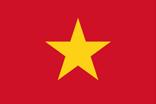
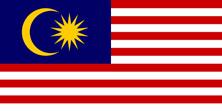


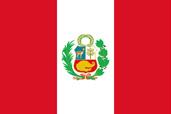
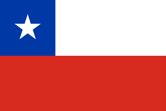
The CPTPP is a trade agreement between Australia, Brunei Darussalam, Canada, Chile, Japan, Malaysia, Mexico, New Zealand, Peru, Singapore, and Vietnam. It accounts for 500 million people and 13.5 percent of the global GDP. The CPTPP entered into force in December 2018. The agreement consists of 30 chapters, covering market access for goods and services, investments, government procurement, digital trade, competition policy, and state-owned enterprises, technical barriers to trade, and sustainable development.


Market access for goods
CPTPP eliminated 90 percent of customs duties between trading partners at entry into force. The duty reduction for the remaining products occurs over transition periods (up to 20 years). Upon full implementation, 99 percent of goods can move duty-free across CPTPP.

Investment liberalisation and trade in services
Concessions were negotiated based on negative lists. CPTPP parties made commercially meaningful concessions in several sectors.
Government procurement

CPTPP sets common standards for government procurement that are robust, transparent and allow suppliers to participate fairly in procurement processes. All parties have made concessions in CPTPP, including those that are not a member of the WTO GPA. The concessions are not as comprehensive as concessions made in EU trade agreements.
In July 2023 the United Kingdom (UK) signed the CPTPP. Although the country has several FTAs installed with members, and experts expect the effect of CPTPP on the British economy to be limited with approx. 0.1 percent GDP growth, analysts see the benefits in joining: UK gets access to an FTA in which many more countries are interested, and it gets easier for British companies to diversify their supply chains in the Transpacific region.
15 Singaporean-German Chamber of Industry and Commerce
Indo-Pacific Economic Framework for Prosperity (IPEF)

On 23 May 2022, the Indo-Pacific Economic Framework for Prosperity (IPEF) was launched by 14 countries, including the United States of America, Australia, Brunei Darussalam, Fiji, India, Indonesia, Japan, the Republic of Korea, Malaysia, New Zealand, Philippines, Singapore, Thailand, and Vietnam. The countries have all committed to collaborate on closer economic integration in innovative ways, which extends beyond just trade. The 14 IPEF partners encompass over half of the world’s population as well as account for 40 percent of global GDP and 28 percent of global goods and services trade.
The IPEF aims to advance resilience, sustainability, inclusiveness, economic growth, fairness, and competitiveness for the countries’ economies. Through this initiative, the partners seek to contribute towards cooperation, stability, prosperity, development, and peace within the region. This will offer tangible benefits that fuel economic activity and investment, promote sustainable and inclusive economic growth, and benefit workers and consumers across the regions.
It is important to note that the IPEF is not a free trade agreement, and it does not specify any market access or tariff reductions. However, some experts believe that it can serve as a foundation for future trade agreements.
The launch has initiated discussions on future negotiations on the following pillars, which are designed to address critical aspects of the region's economic growth and development: (1) Trade; (2) Supply Chains; (3) Clean Energy, Decarbonisation, and Infrastructure; and (4) Tax and Anti-Corruption. The IPEF allows flexibility, meaning that partners are not required to participate in all four pillars.
Together, these four pillars of the IPEF represent a comprehensive and integrated approach to economic growth and development in the Indo-Pacific region. Currently, the negotiations are going on; the US expects first results by the end of 2023.
16 Singaporean-German Chamber of Industry and Commerce

Why German Businesses support an EU-ASEAN FTA between the EU and ASEAN Singaporean-German Chamber of Industry and Commerce 04 Survey Results: FTAs - EU and ASEAN
4 Survey Results: FTAs - EU and ASEAN
The survey was distributed by the German Chamber network in ASEAN between 12 and 23 June 2023. 169 companies participated in the survey. The survey consisted of nine questions and was designed by the Singaporean-German Chamber of Industry and Commerce.
Only 14 percent of the respondents stated that they do not face any barriers to trade when exporting goods and services to ASEAN. Most pressing hurdles are custom duties (49 percent), inconsistent tariff classification and customs valuation (38 percent), cumbersome customs procedures (36 percent), and import/export licence requirements (33 percent). This shows the importance of an EU-ASEAN FTA for German companies.
Custom duties
Inconsistent tariff classification, customs val.
Cumbersome customs procedures
Import/export licence requirements
Red tape
Import/export restrictions
Technical barriers to trade

Other licence requirements
Lack of access to the public procurement market
Lack of IP protection
Cross-border delivery of service is not allowed
Data-related restrictions
Strict, frequent sanitary, phytosanitary measures
Quotas
I do not face any barriers
18 Singaporean-German Chamber of Industry and Commerce
Graph 4: List of trade barriers German companies face in ASEAN
49% 38% 36% 33% 30% 23% 23% 22% 14% 14% 11% 10% 8% 8% 14% 0% 10% 20% 30% 40% 50% 60%
The picture regarding investment barriers is a bit brighter but there is still much room for improvement: only 22 percent of companies stated that they do not face any investment barriers in ASEAN. The most named barriers are licence requirements (37 percent), local content requirements (29 percent), and measures which restrict or require specific types of legal entities or joint ventures (28 percent). Seven percent of companies stated “Other” and named political and legal concerns, HR problems (small talent pool, not enough work permits, problems with hiring people across borders), red tape, high price levels, FDA regulations, and Bumiputera companies (relating to Malaysia).
Licence requirements
Local
Foreign exchange restrictions/limitations

Technology transfer requirements
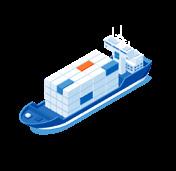
Other (please specify)
I do not face any barriers
19 Singaporean-German Chamber of Industry and Commerce
content requirements Operational limits
Capital ownership
equity caps Measures which restrict or require specific types of legal entities or joint venture 37% 29% 28% 26% 26% 21% 18% 7% 22% 0% 5% 10% 15% 20% 25% 30% 35% 40%
/
Graph 5: List of investment barriers German companies face in ASEAN
More than half of the respondents (55 percent) see an EU-ASEAN FTA as being very important, while an additional 30 percent state it is important for their company. Only three percent assess an FTA as being not important. These results show again how important an EU-ASEAN FTA is for the German economy.
A large majority (87 percent) think that an EUASEAN FTA would increase their competitiveness in the market.
56 percent state that their competitiveness would be increased ‘a lot’. Only two percent of the attending companies think that the FTA would decrease their competitiveness.
20 Singaporean-German Chamber of Industry and Commerce 31% 56% 2% 11%
Graph 7: Implications of an EU-ASEAN FTA on competitiveness
60% 50% 40% 30% 20% 10% 0% 55% 30% 13% 3% Very important Important Of moderate importance Not important
Graph 6: Importance of an EU-ASEAN FTA for German companies
a lot Unchanged Increase a little Decrease
Increase
Most participants (85 percent) state that an EU-ASEAN FTA would make ASEAN a more attractive sourcing market. Only five percent think that an FTA would not make ASEAN more attractive as a sourcing market.
Nearly two-thirds of respondents (64 percent) would prefer a regional FTA over bilateral FTAs with ASEANcountries. Only nine percent would prefer a bilateral agreement over a region-to-region agreement.
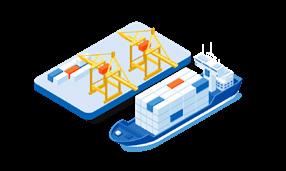
21 Singaporean-German Chamber of Industry and Commerce
Graph 8: Impact of an EU-ASEAN FTA on ASEAN as a sourcing market
35% 9% 50% 5% 11% 27% 64%
Graph 10: Preference if companies would prefer an EU-ASEAN FTA over bilateral FTA
Yes Not sure No A lot
at all A little Not sure
Not

Why German Businesses support an EU-ASEAN FTA between the EU and ASEAN Singaporean-German Chamber of Industry and Commerce 05 Political and economic situation
5 Political and economic situation
With a GDP of USD 3.6 trillion in 2022, a population of 662 million people and projected annual economic growth of around 5 percent in the years to come, it is estimated that ASEAN will become the fourth-largest economy in the world by 2050. ASEAN is a major global hub for manufacturing and trade and the ten nations have advanced the so-called ASEAN Economic Community over the years, with the ambition to promote economic integration to transform ASEAN into a single market and production base. Despite the economic integration efforts, many trade and investment barriers prevail. Some notable issues are:
• ASEAN is not a customs union, each country applies its separate system of procedures, rules, and taxes for imports, exports, and transit goods. Customs duties, import licence requirements, customs procedures, and other border measures vary significantly.
• In many sectors, regulatory harmonisation has only partially occurred.
• Many commercially meaningful sectors are restricted for trade in services. Likewise, investment regimes also vary, and investment barriers prevail in key industries.
After launching the negotiations in 2007 and agreeing to launch formal region-to-region talks, to develop a framework in 2017, a lot has changed; the world faced a pandemic which was one major factor for supply chain disruptions. These disruptions still impact the German economy in 2023 and have potential to do so in the future. Since then, German companies and political leaders see the urgency for a diversification strategy and moving away from being economically dependent on one major partner. German Federal Minister for Economic Affairs and Climate Action Robert Habeck made this clear during his speech at the 17th Asia-Pacific Conference of German Business (APK) on 14 November 2022 in Singapore:
German Federal Chancellor Olaf Scholz addressed the same topic during his keynote speech at the APK on the same day:

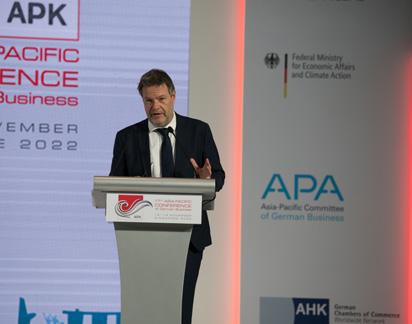
23 Singaporean-German Chamber of Industry and Commerce
We in Germany are currently experiencing painfully what the disastrous consequences can be when we become too economically dependent on a single country.
Our view of the matter is clear: the best way to achieve more resilient supply chains is to diversify our trade relations. […] Diversification makes your businesses less vulnerable – and our economies more stable and secure. As a government, we will help you by creating favourable conditions. This also means strengthening our political engagement with the Indo-Pacific.
Given that ASEAN holds a central position within the EU Strategy for Cooperation in the Indo-Pacific, this can be interpreted as an endorsement for strengthening both economic and political connections with ASEAN through mechanisms like free trade agreements, such as the EU-ASEAN FTA.
Besides the fact that the FTA would help German businesses to diversify their global supply chain network, it also enables companies to diversify their export markets. Those two points can reduce the reliance on a single market, as addressed by Mr Habeck, and helps to mitigate different risks like economic growth fluctuations or (geo-)political risks. The survey results (refer to chapter 4) underpin this point.
An EU-ASEAN FTA would create a large integrated market with about 21 percent of global GDP and 1.1 billion people which fosters economic growth in both regions. Furthermore, it can enhance market access and therefore reduces or eliminates tariffs and non-tariff barriers which are huge barriers for German companies.
Moreover, an FTA can support the harmonisation of trade rules and procedures (such as rules of origin) and of standards across ASEAN. Therefore, an FTA can reduce trade compliance costs and would make it easier for companies to apply the FTA. This addresses some of the major hurdles named by companies in the survey. The bilateral FTAs include a partly regional cumulation rule regarding the rules of origin which already helps companies today. However, the rule mostly only applies to countries which have an FTA in place which are only two countries at the moment (please refer to chapter 2) and could leave out important countries of the supply chain in the future. Therefore, a regional cumulation rule is not enough.
An FTA will certainly promote increased investment flows in both regions. The combination of the EU's strong market and ASEAN's growing economies would create new opportunities for businesses, particularly small and medium-sized enterprises, to expand their operations and access new customers.
Additionally, an EU-ASEAN FTA would foster closer economic ties and cooperation as well as promoting stability, peace and prosperity which are core objectives and values of the EU.
With several regional FTAs and frameworks (please refer to Chapter 3) in place, the EU is at risk to be left out in ASEAN and the Indo-Pacific region without joining or setting up such an FTA.
Lastly, FTAs are negotiated and installed to foster economies – of which companies are an essential part of. That is why their need should be addressed. Overwhelmingly, 85 percent of participating companies stated in the survey that they find the EUASEAN FTA very important or important. This is a clear sign from German companies that they are asking their legislator to get back to the negotiation table. Also, the ASEAN countries show clear signs of their willingness to improve trade ties between them and the EU – some of them already installed bilateral FTAs, others are negotiating and some more ask for resuming or starting negotiations as an FTA would give them access to the European market.
24 Singaporean-German Chamber of Industry and Commerce

06 Statements from the German economy Singaporean-German Chamber of Industry and Commerce Why German Businesses support an EU-ASEAN FTA between the EU and ASEAN
6 Statements from the German economy
FTAs with the ASEAN countries would support Bosch’s ambitious growth targets and its value chains in the region. Therefore, we strongly support the conclusion of FTAs with ASEAN countries, especially with Malaysia and Thailand and in the long-term ideally as a regional agreement between the EU and ASEAN.
Bosch believes that FTAs should be deep and comprehensive, covering tariffs, non-tariff barriers, intellectual property rights and investment conditions. We strongly support the principle of ‘cumulation’ of preferential origin with other ASEAN countries. We also believe that, in order to reduce non-tariff barriers in the automotive sector throughout the region, ASEAN should recognise UNECE regulations for automotive products in parallel to their national standards.
An EU-ASEAN FTA would make it easier for our German and European customers to diversify their supply chains within Asia, allowing them to respond more flexibly to geopolitical tensions and benefit from cost advantages across different markets.
Further opening of access to the Southeast Asian banking market would allow us to allocate capital more easily in the ASEAN region, also to respond flexibly to supply chain shifts from other Asian regions to ASEAN, so that we can better support our customers from our German and European home market.
Deutsche Bank Evonik
We strongly welcome a resumption and continuation of talks on an EU-ASEAN FTA.
Considering the EU and ASEAN are key trading partners, the EU-ASEAN FTA would greatly benefit both regions in terms of greater market access and economic efficiency. Globalisation is a key growth driver that adds value to businesses and individuals all along the value chain.
Regional FTAs are a step towards international solidarity, supporting globalisation through openness and partnership based on trust, which is also strongly aligned with Evonik’s values.
26 Singaporean-German Chamber of Industry and Commerce
Bosch
Ola Källenius, Chairman of the Board of Management of Mercedes-Benz Group AG, stated that: “At Mercedes-Benz, we seek to uphold free and fair trade. It is the foundation of prosperity for economies around the world. The ASEAN region is home to some of our key markets and will only gain in importance in the future. In addition to bilateral free trade agreements between the EU and ASEAN member states, a region-to-region agreement would be a great leap forward, fostering even more economic growth and exchange."
Mercedes-Benz Group AG
Siemens AG
Existing FTAs in ASEAN are helping us and our customers in the region to access markets and compete more easily through reduced tariffs and barriers of trade.


A region-to-region agreement between the EU and ASEAN could further enhance behind-the-border barriers; promote investment; and solidify legislation on issues as digital trade, intellectual property, and public procurement.

27 Singaporean-German Chamber of Industry and Commerce

Why German Businesses support an EU-ASEAN FTA between the EU and ASEAN Singaporean-German Chamber of Industry and Commerce 07 Conclusion
7 Conclusion
The EU-ASEAN Free Trade Agreement (FTA) would serve as catalyst for economic growth, diversification, and enhanced ASEANimplementation, while strengthening ties between the two regions. Bilateral FTAs between the EU and ASEAN countries act as building blocks towards a future EU-ASEAN FTA. As discussed in Chapter 1, this was always the plan when the EU decided to negotiate bilaterally. Also, the Singaporean government called for an expeditious conclusion of the agreement earlier this year.
With two FTAs in place, two more on the way, a good basis is laid to return to the negotiation table. Complex agreements involving many countries require time for finalisation. Hurdles such as the political situation in Myanmar, disagreements about the EU Deforestation Regulation (EUDR) and regulations that give local companies better access to tenders for the public procurement market have to be addressed and resolved.
85 percent of the companies surveyed stated that an EU-ASEAN FTA would be very important or important for them! Also, the changing geopolitical and economic landscape suggests expediting negotiations. The EU could:
a. adopt a framework like the Indo-Pacific Economic Framework for Prosperity (IPEF) to establish standards beforehand. Or
b. alternatively, signing a less comprehensive deal initially, with a scope like other ASEAN + 1 FTAs, could yield essential results faster, with upgrades to the comprehensive FTA the EU is aiming at later on.
Companies need their political decision makers to build flexible and practicable frameworks, in order to persist in a highly globalised world with various complex challenges. Starting to set up these frameworks early can be a major competitive advantage in the future for businesses in Germany, the EU and in ASEAN. These arguments are substantiated by the survey results (refer to chapter 4).
ASEAN countries are eager to improve trade ties with the EU, with some already having bilateral FTAs, others negotiating, and more seeking negotiations for access to the European market.
German Federal Chancellor Olaf Scholz said during his keynote speech at the 17th Asia-Pacific Conference of German Business (APK) on 14 November 2022 in Singapore:
“Germany is keen on strengthening its economic ties with the [Indo-Pacific] region!”
Let us start to materialise his statement by putting the EU-ASEAN Free Trade Agreement negotiations back to the focus and restart them with new power and assertiveness to conclude the negotiations of the FTA to strengthen countries and companies in both our regions.
29 Singaporean-German Chamber of Industry and Commerce
Singaporean-German Chamber of Industry and Commerce 25 International Business Park #03-105 German Centre Singapore 609916 T +65 6433 5330 W www.sgc.org.sg


















 Dr Tim Philippi Executive Director, SGC
Dr Tim Philippi Executive Director, SGC






































